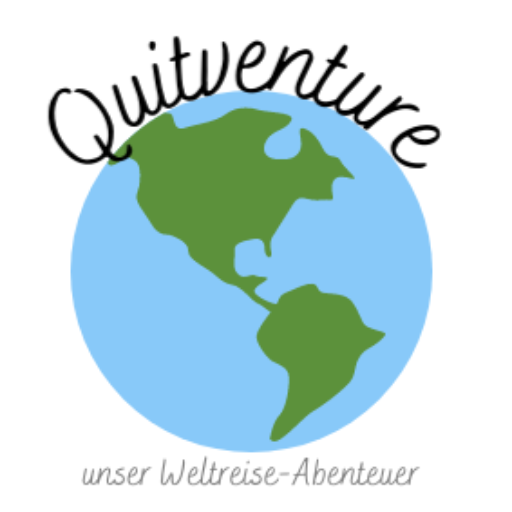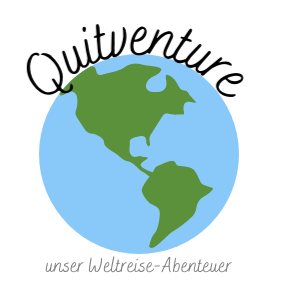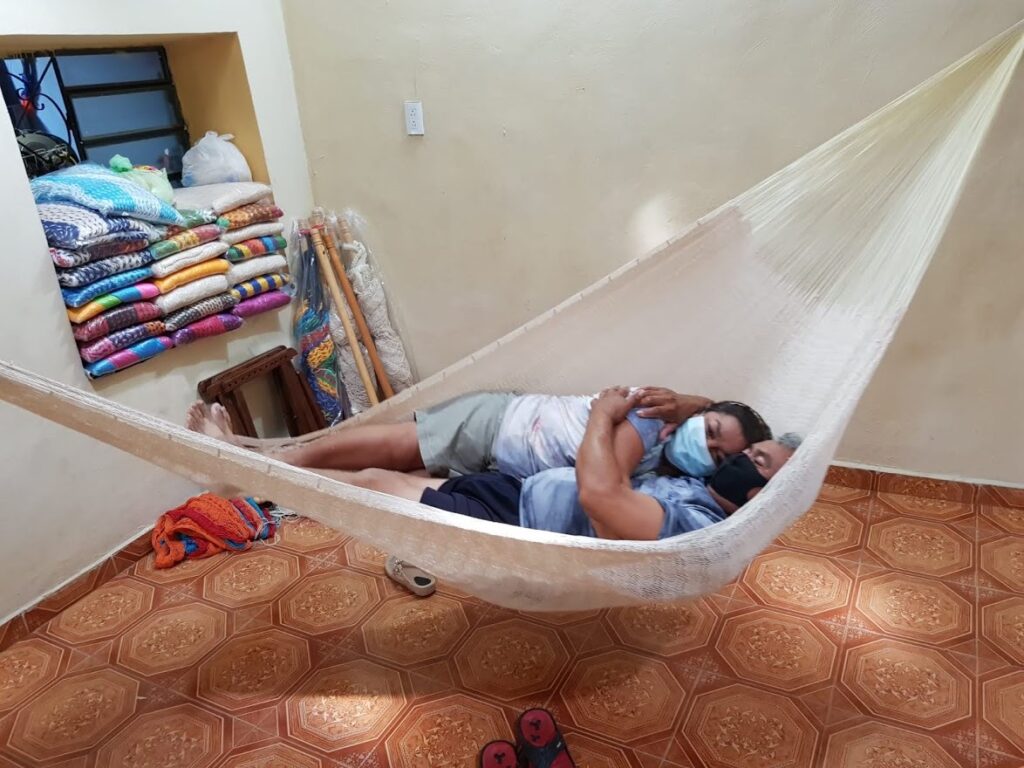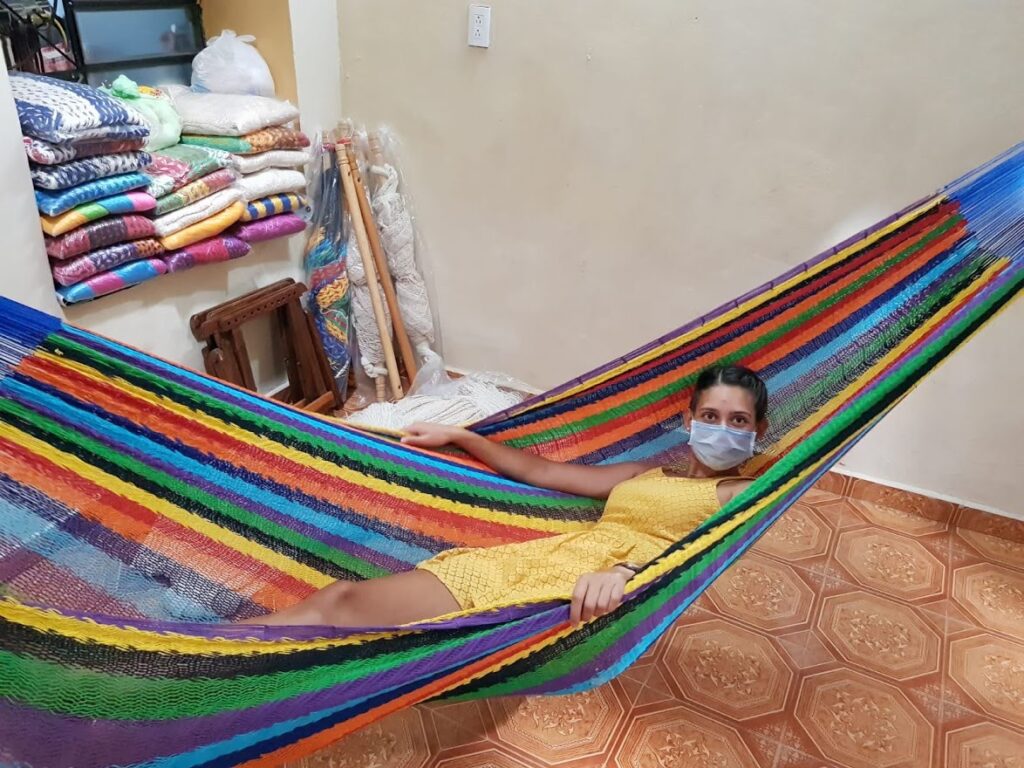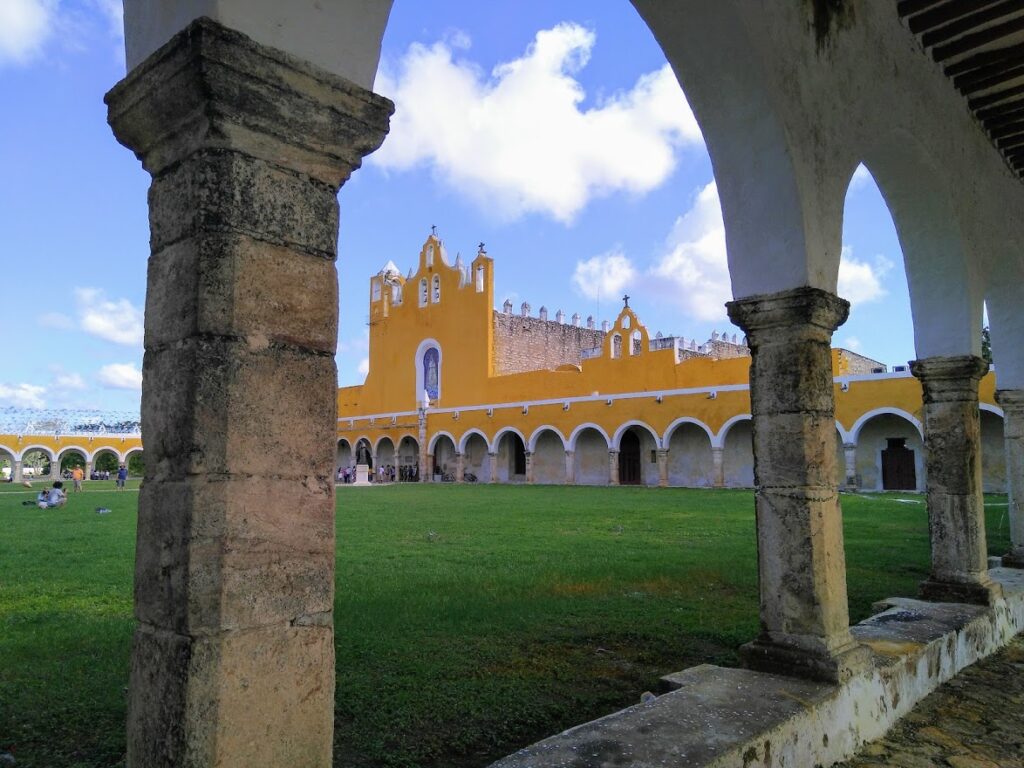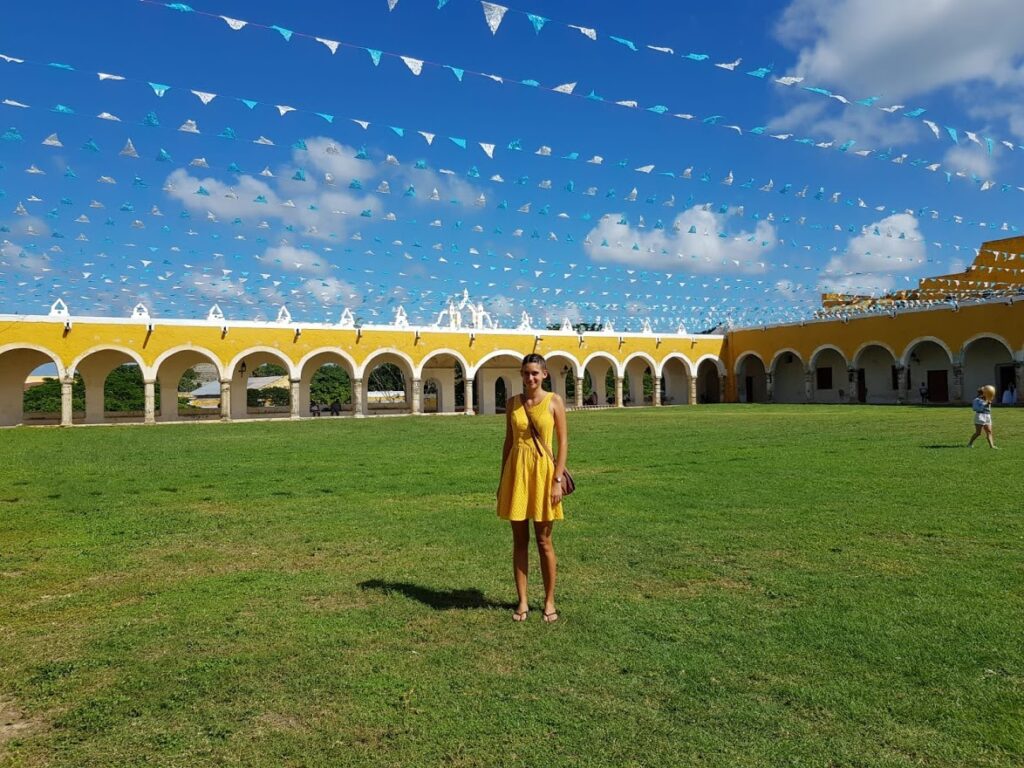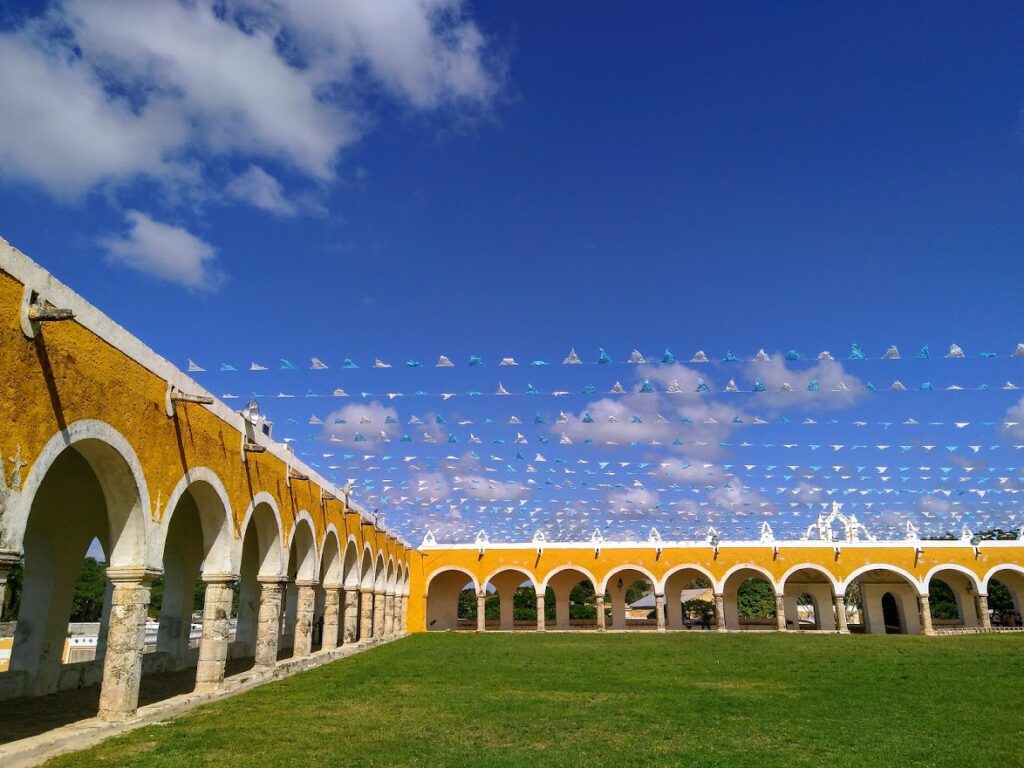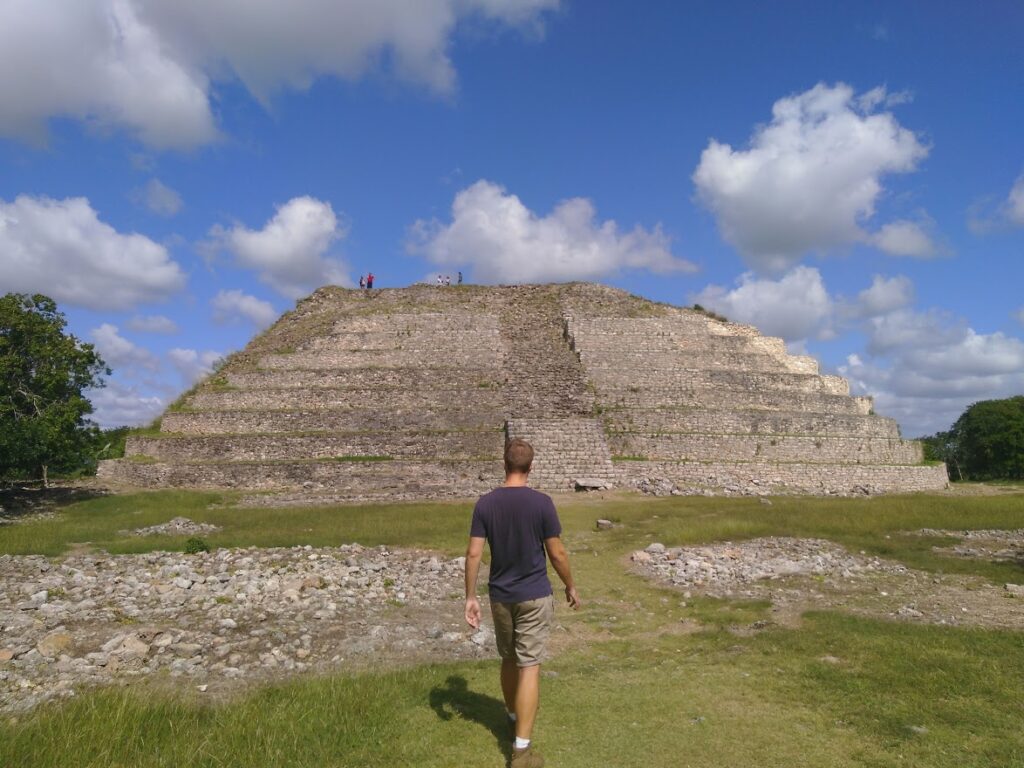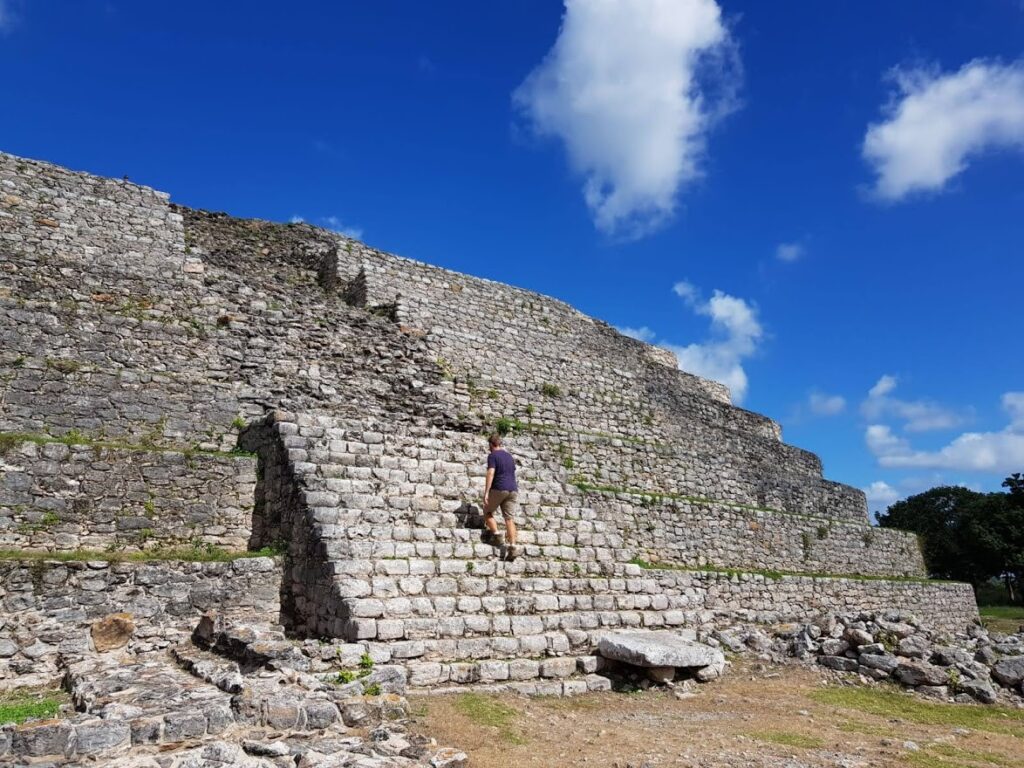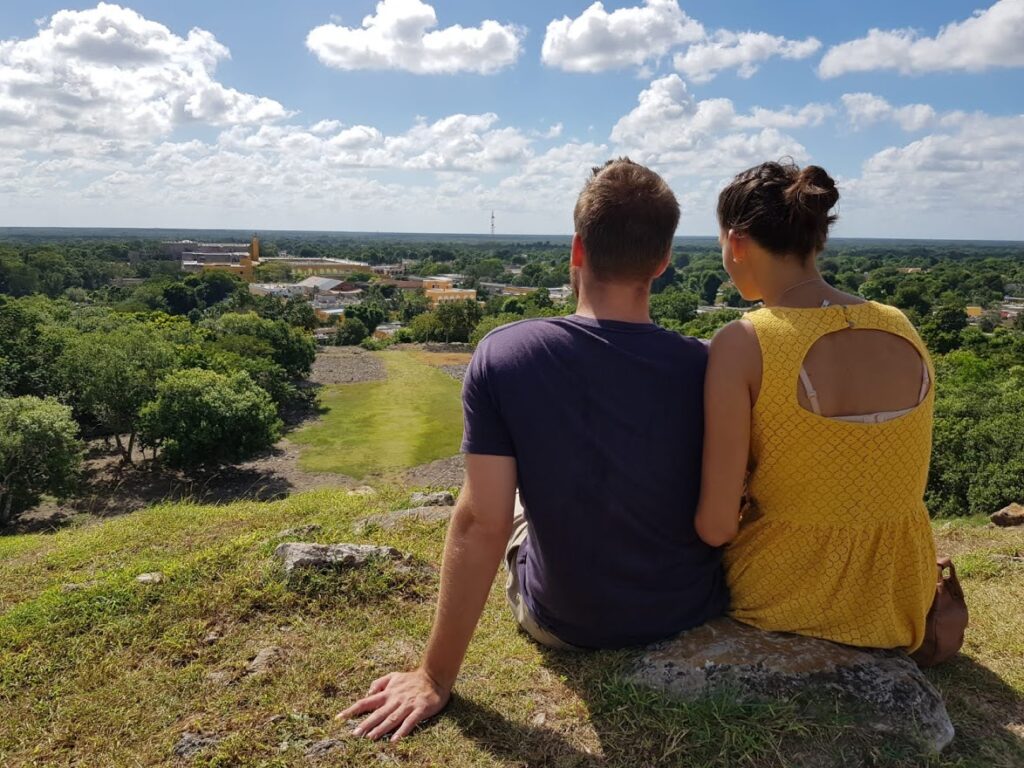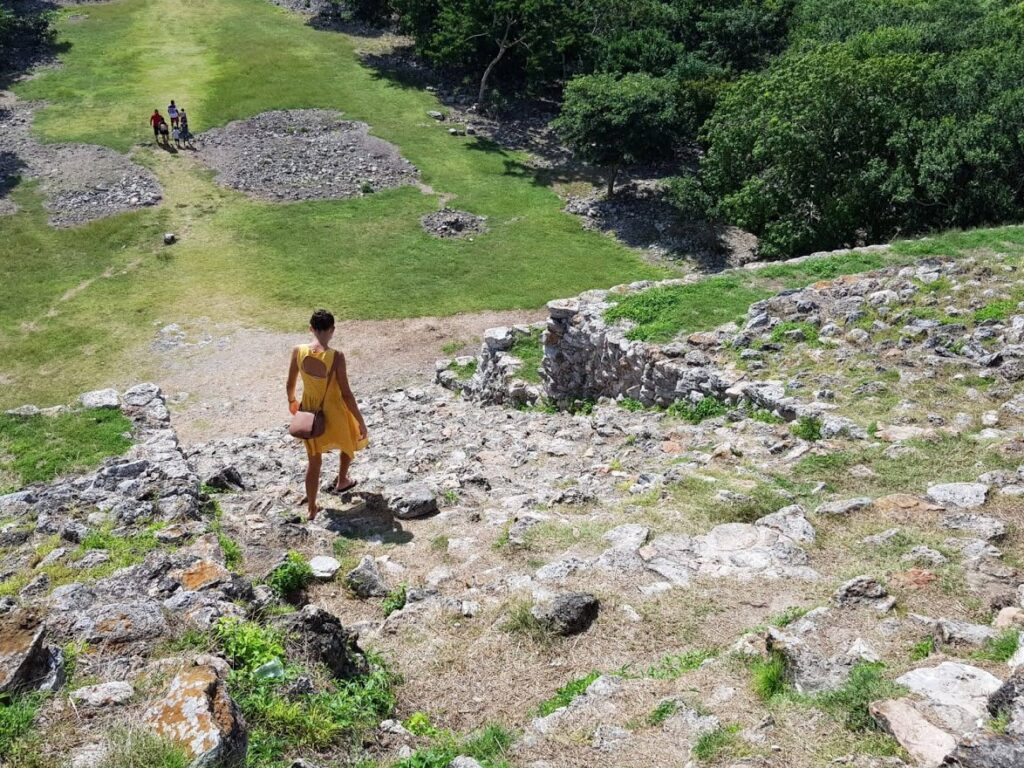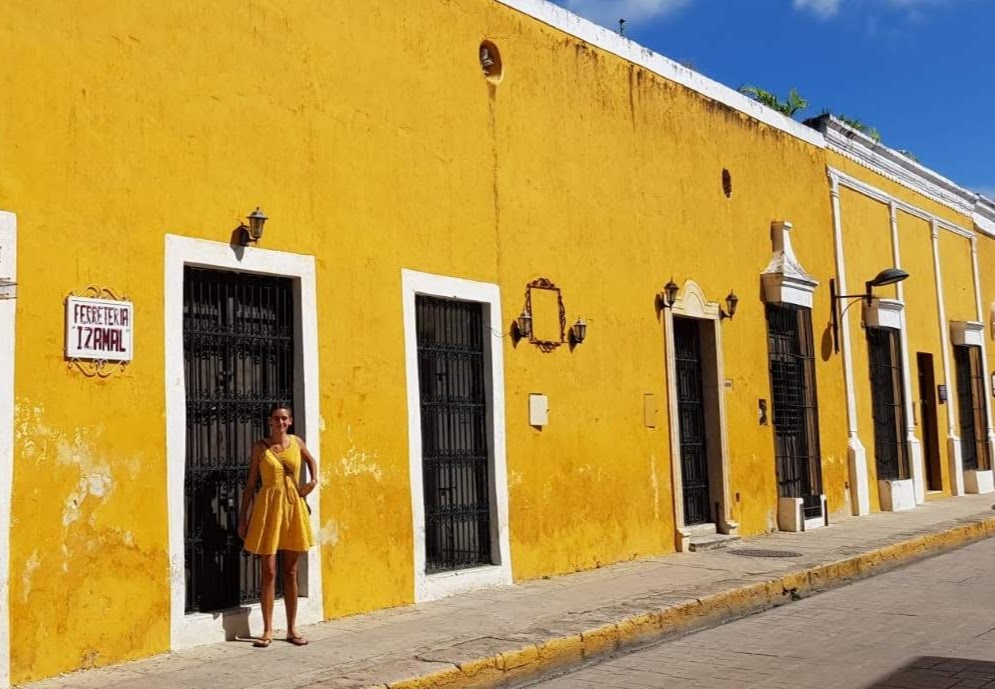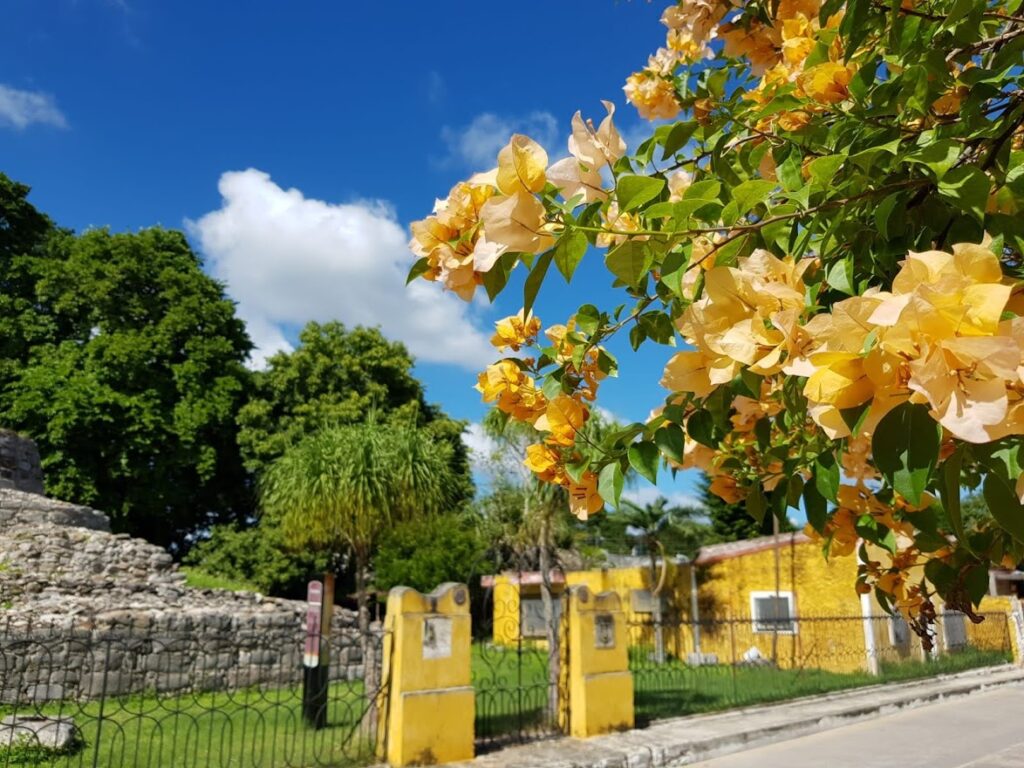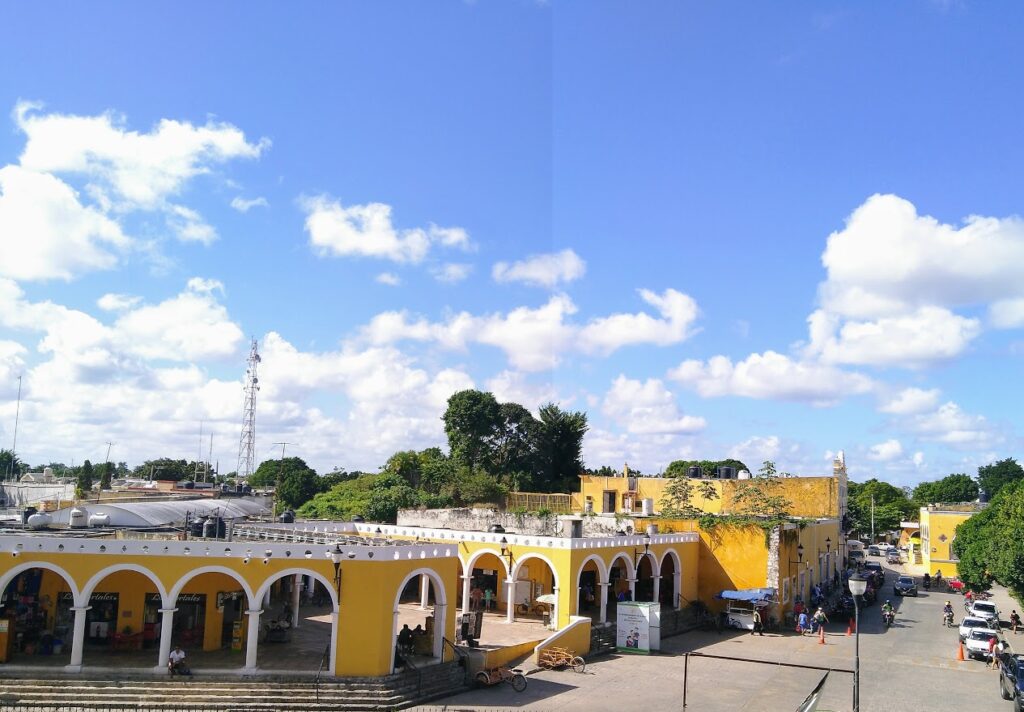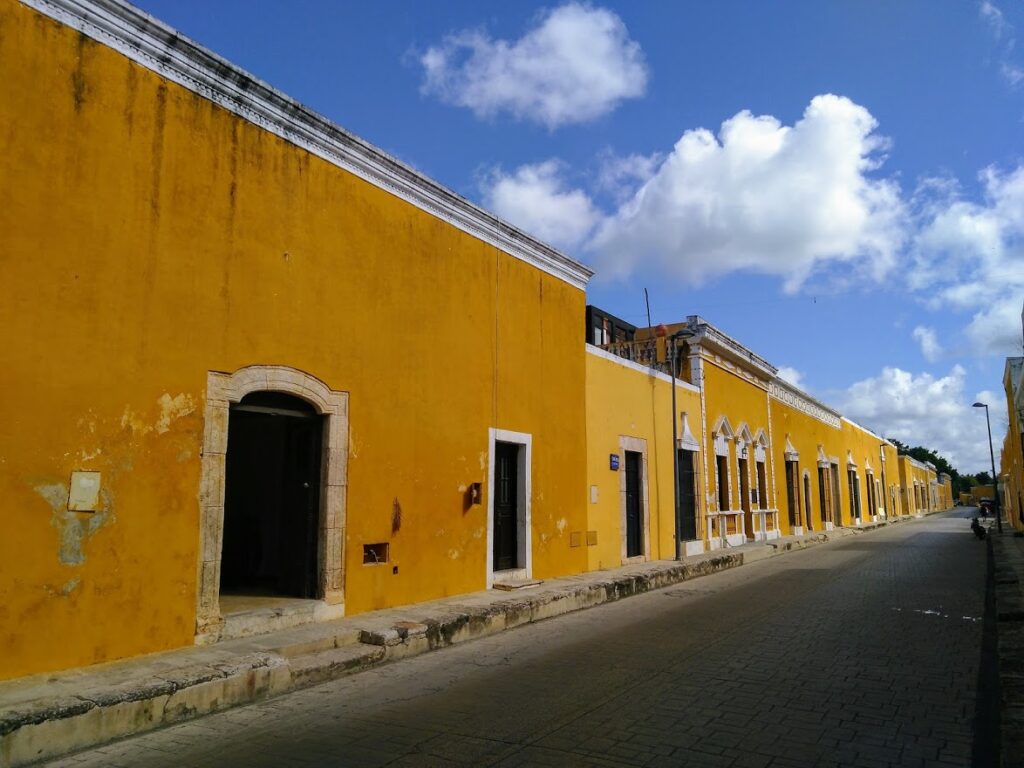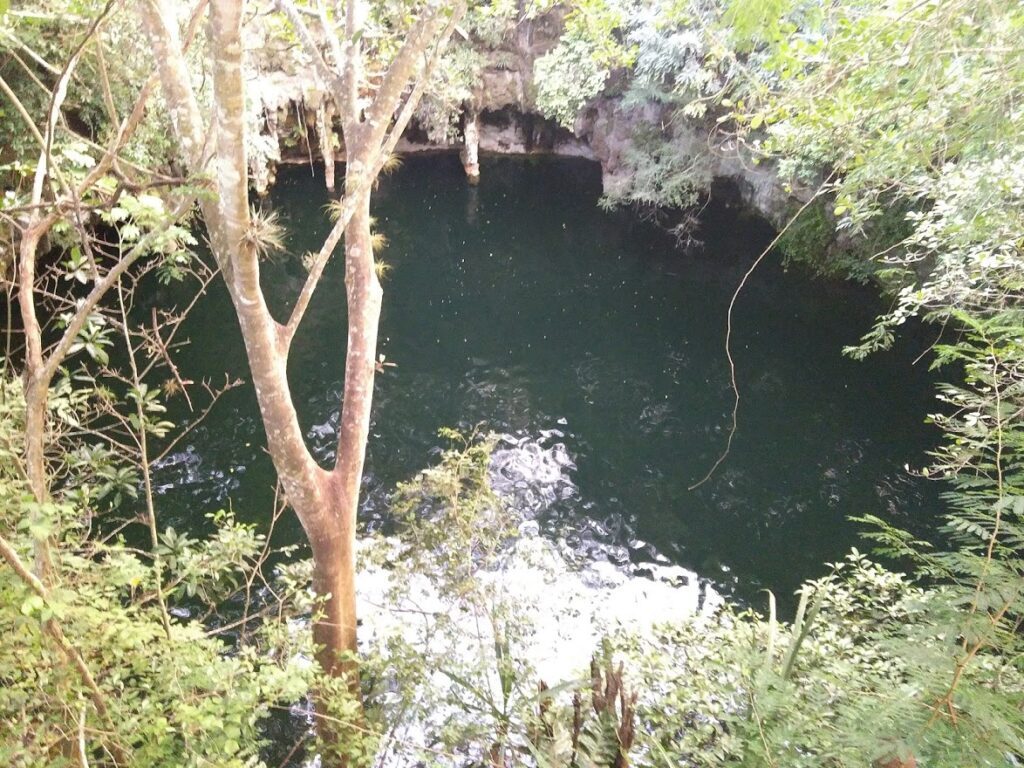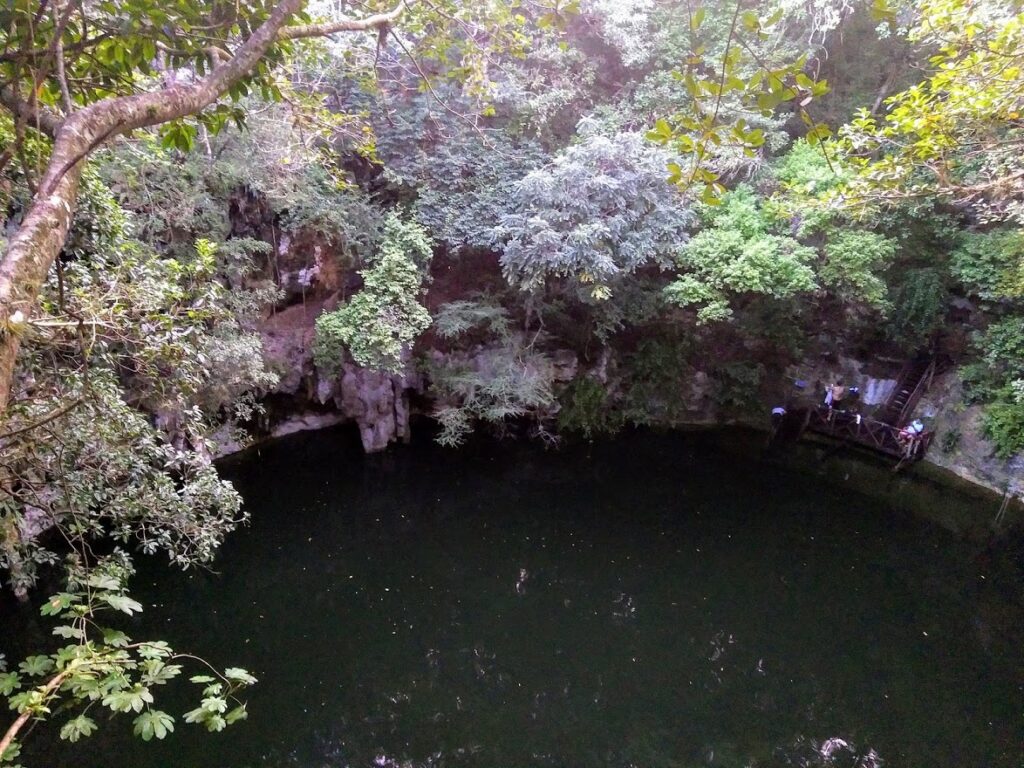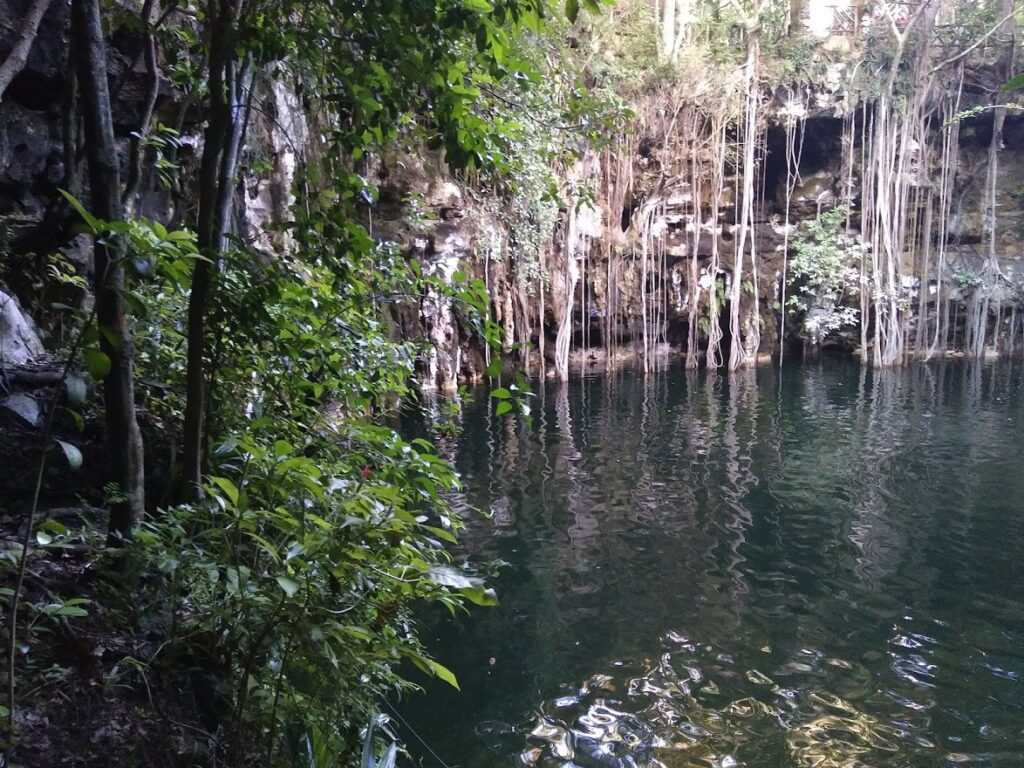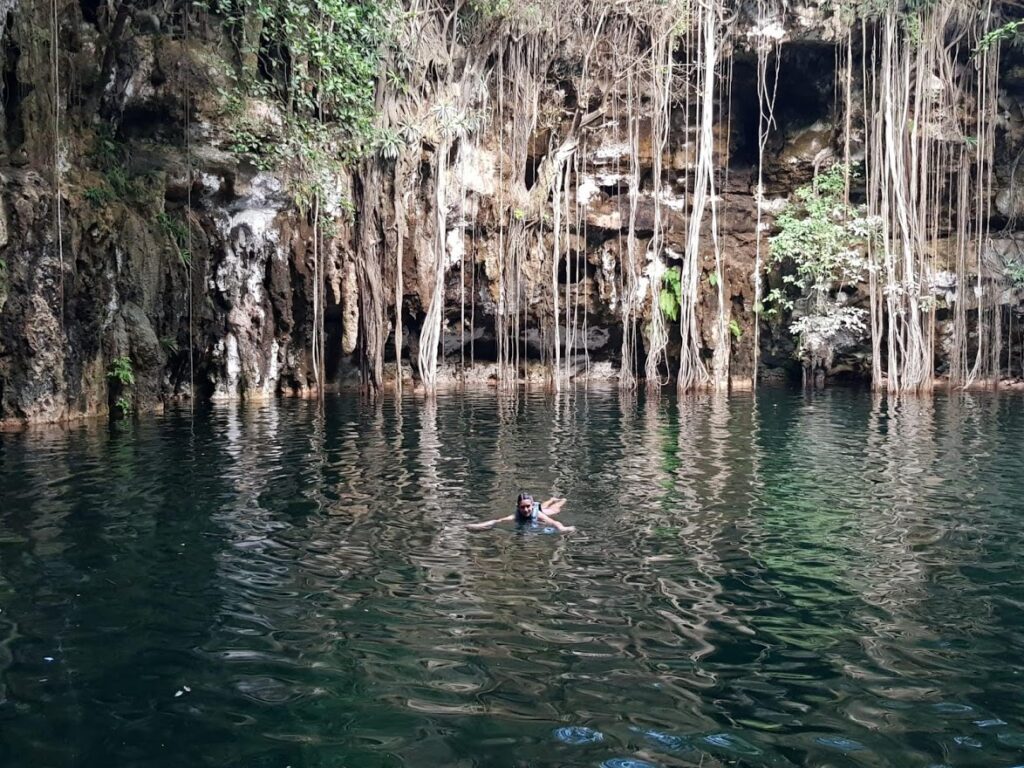Hammocks in Tixkokob, a day trip to Izamal and to the cenote in Yodzkonot
On the weekend aother tour was offered by our school and we, of course, participated. We met on Saturday morning at 8 in front of the school where a private colectivo was already waiting for us. Raul, our guide, who had also done the cemetery tour with us, had rented the colectivo for the day, but there were only 5 of us.
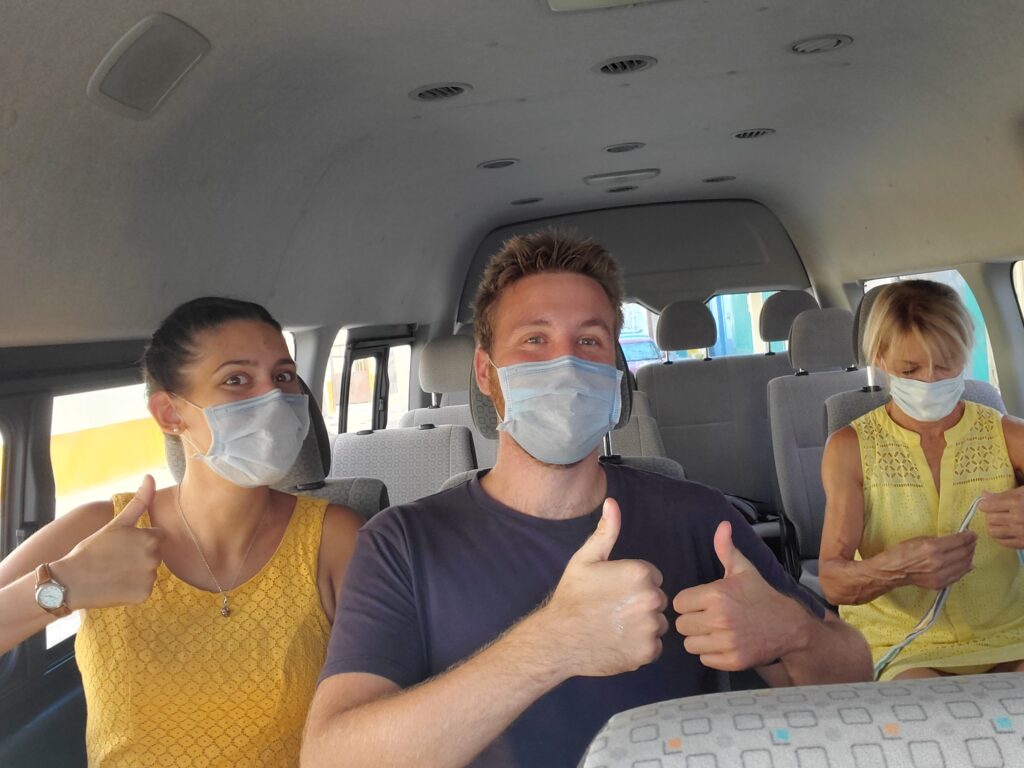
Then we were off, out of Merida and into Tixkokob ("Tischkokob" pronounced), about 20km away. There we were already expected by Miguel in his little house. Miguel and his wife make hammocks and that day we were allowed to watch them make them. In Yucatan, the majority of the inhabitants do not sleep in beds, but actually in hammocks. There are also different sizes, from single hammocks to KingSize hammocks for the whole family. In Yucatan on the walls of the houses are everywhere holders for hooks, where one can hang up the hammock then simply relax. The Yucatecos sleep in it mainly because it is quite cool to sleep in, despite the heat. Of course, it is also practical that you can simply roll up the mats the next morning and hang them on the wall and thus use the entire room for other things.
Miguel and his wife showed us first at an exhibit, which different types of knotting there are and I was then actually allowed to try my luck. Of course, I was much slower than the two.
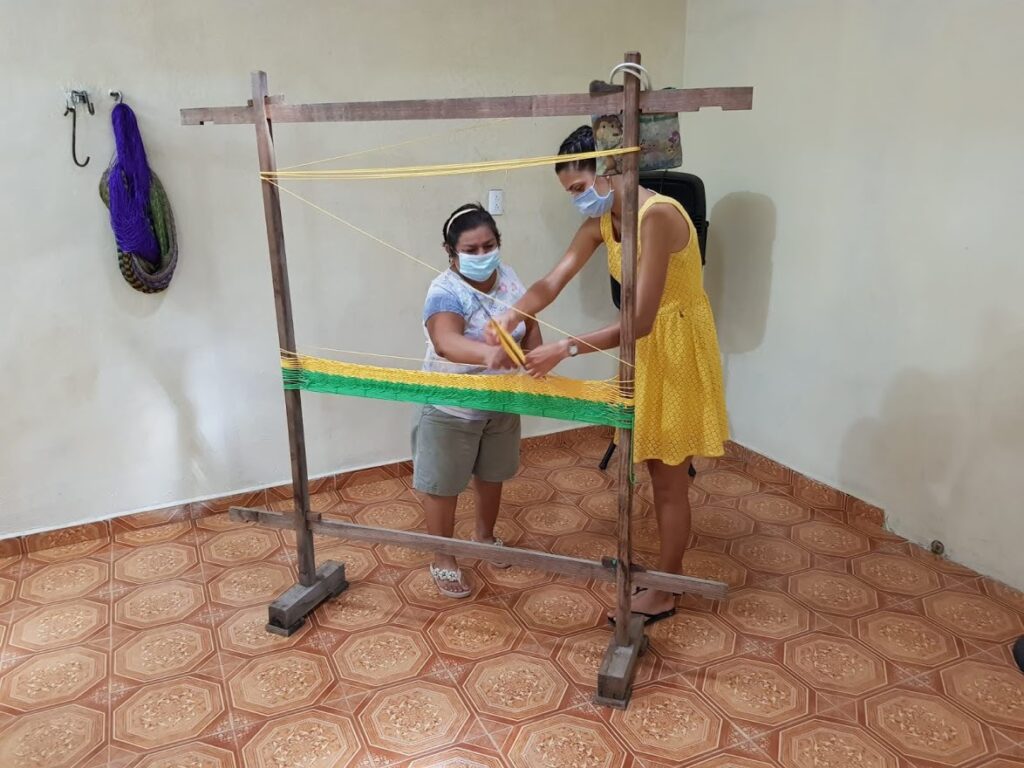
Miguel then explained to us that there is a clear difference in the quality of hammocks sold for tourists and those for the locals, because most hammocks for tourists consist only of single knots that hold the fabric together. In contrast, the real hammocks for sleeping have up to 3 ropes linked together, so it does not matter if after a long time a knot breaks, because you still have two spare knots. He was a funny guy and it didn't seem like a sales pitch to us either. He and his wife showed us several variations of how you can sleep together in a hammock, how the women from Yucatan put their babies to sleep in the mats and we were also allowed to try it out.
They were so warm and friendly, we really enjoyed the visit. Shortly before we said goodbye, I thought very briefly and then decided that I would like to have the colorful hammock in our future home. We briefly thought a bit about where we could hang it and whether I really want to transport it now for the next few months, but the decision was actually already made. So we could also support them and now we will be able to remember this beautiful visit forever.
Izamal, the "City of Three Cultures
The yellow city of Izamal is one of the "magical places" (pueblos mágicos), of which there are a total of 121 in Mexico. When Pope John Paul II visited the city of Izamal in 1993, the inhabitants decided without further ado to paint the facades of the city in the flag colors of the Vatican (yellow and white). I had read this before and dressed in camouflage colors to match:
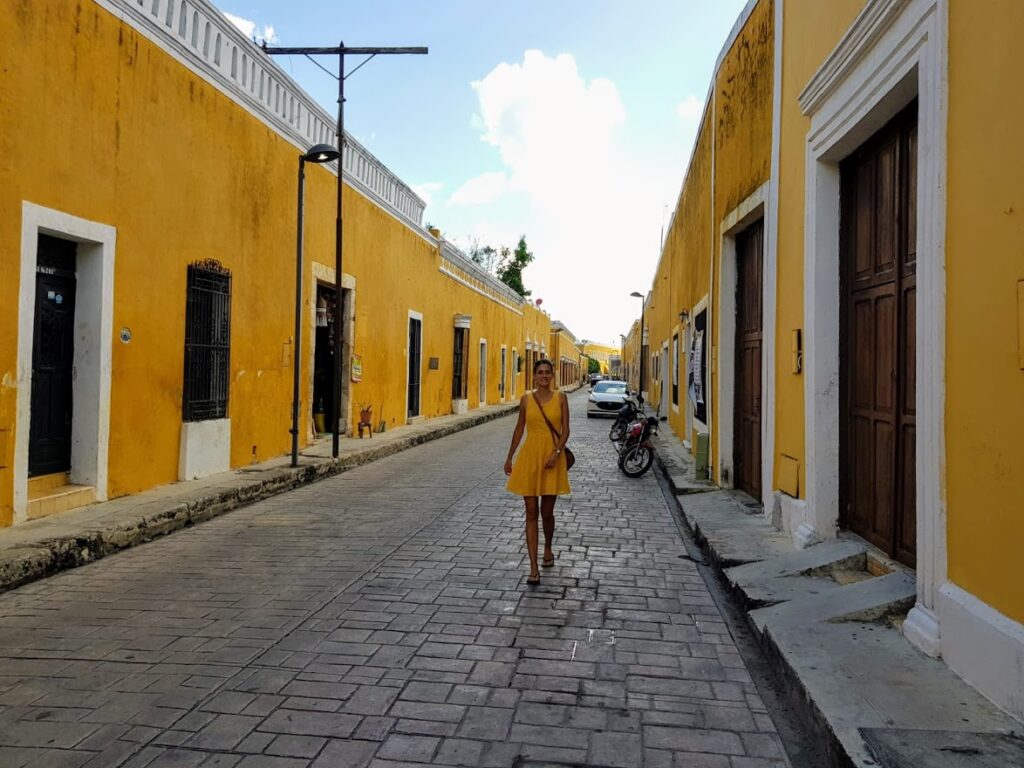
The place is also called the "City of Three Cultures" because of the meeting of influences from the Mayan period, Spanish colonial style and modern Mexico. While Raul told us more about the city, we walked through the yellow streets to a Franciscan monastery, which was built in the 16th century on the platform of a Mayan pyramid that had stood there until then. We toured the monastery and were also allowed to take a look inside the church, where a communion had just ended.
From the monastery we could already see other Mayan pyramids. We strolled through the yellow alleys to the great pyramid Kinich-Kakmó. To get to this we did not have to pay an entrance fee and we were even allowed to climb on top of the pyramid. That was a great experience. From the top we had a beautiful view of the city.
Afterwards we strengthened ourselves in a nearby restaurant, which was not quite cheap, but very very tasty! Our guide even arranged for us to take a look behind the scenes and watch how a Mexican woman prepares tortillas.
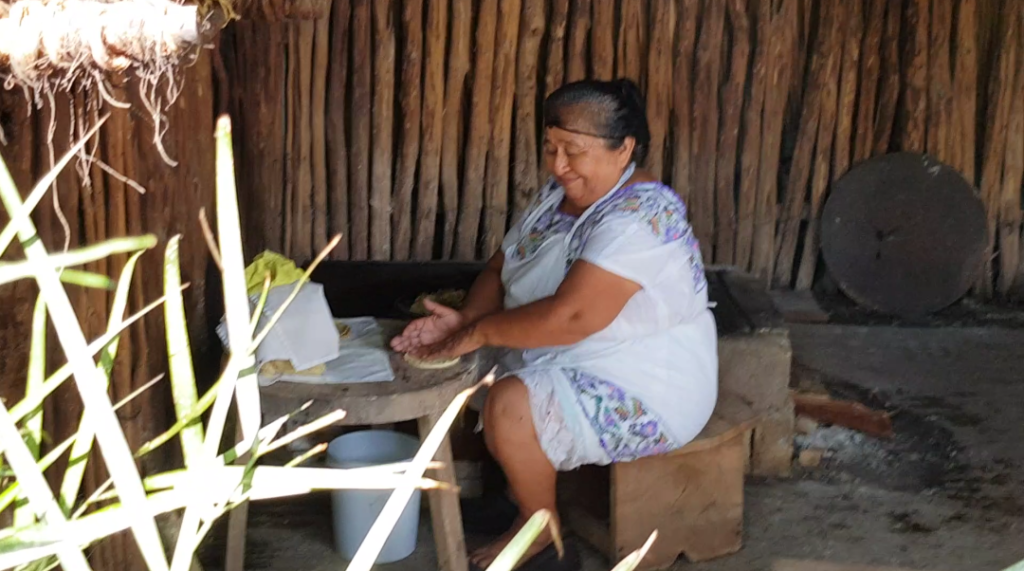
Since I liked it so much in Izamal, here are some more impressions from the city:
Refreshment in the cenote of Yokdzonot
But the two stops were not the end of the day's excursion. For a nice end of the day, Raul had thought about going to the Cenote Chihuan. The special thing about this cenote is that it is completely covered, so you are swimming in a cave. That sounded very exciting to us. Unfortunately, Raul told us when we arrived that it is not fun to swim there because of the heavy rains in the last weeks. But we still wanted to take a quick look and were greeted by a few curious fish. The water normally shimmers blue, during our visit it was rather greenish. Through the small entrance you then normally swim through to the cenote.
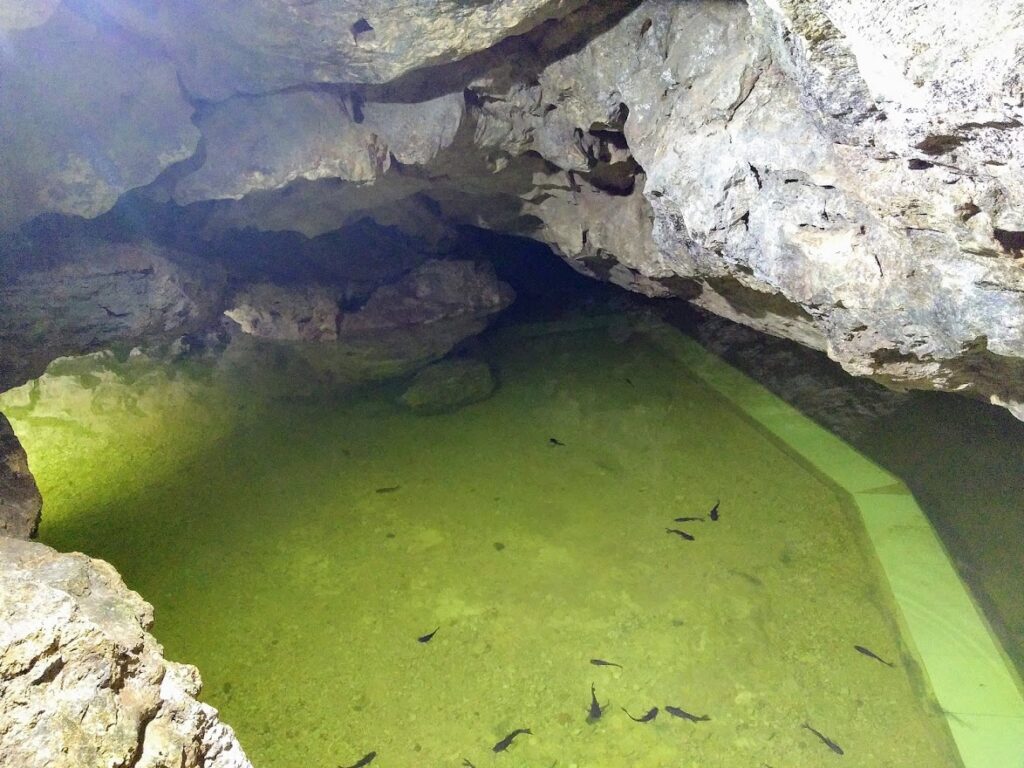
Instead, we drove another 20 minutes to the village of Yokdzonot. There is also a cenote there, which is 40m wide and up to 45m deep. The history of this cenote is also very interesting: In 2005, the women of the village joined together to be able to earn a little money by opening the cenote to the public. After two years of daily cleaning and maintenance, the cenote could be opened in 2007. The entrance fee of just under 3€ is really affordable and you can support the women of the community with it.
When we arrived there were only a handful of other people there and we were able to refresh ourselves in the cool water.
When it started to get dark, we changed again, packed our things and were still brought to the front door in Merida by Raul. It was a really eventful trip because we had made three stops in just one day. It was also very informative with Raul, who could answer any question we had. As a positive side effect, we were of course able to improve our Spanish, because the entire excursion including all the guided tours was of course in Spanish.
Continuation of the Spanish course and new faces
On Monday, our new "everyday life" went into the second round. We continued the Spanish course and had in the group next to Isobel and Sumair the Irish John-Paul with us. With him we visited a Cantina (also called Dive bar) in the evening. This is apparently the Mexican way of pub. There was good music, delicious food and cold cervezas and we drank a really tasty tequila.
Also on our last evening together in Merida we were out again with Isobel, a friend of hers, JP and his wife. We went to a few bars/restaurants until all the doors closed at 10pm. We had a great time together and who knows where else our paths will cross!
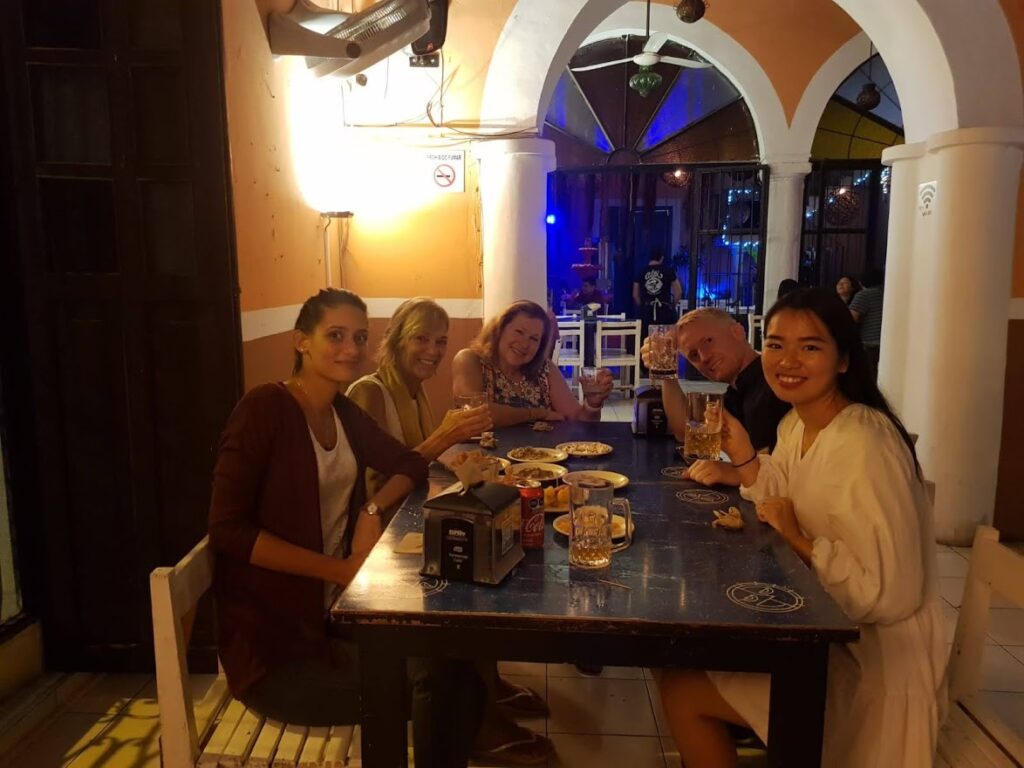
Wir hatten zwei sehr schöne Wochen in Merida und es tat uns beiden sehr gut, mal für eine etwas längere Zeit an einem Ort zu bleiben. Wir nutzten die Zeit auch dafür, unseren Blog mal wieder auf Vordermann zu bringen. Auch wenn es schön war, mal ein bisschen anzukommen, so war die Neugierde auf andere Regionen und Mexiko nach zwei Wochen wieder sehr groß. Nach unserer zweiten Woche im Spanischkurs verabschiedeten wir uns von Merida und fuhren wir mit dem Bus weiter in die gleichnamige Hauptstadt des Bundesstaates Campeche.
